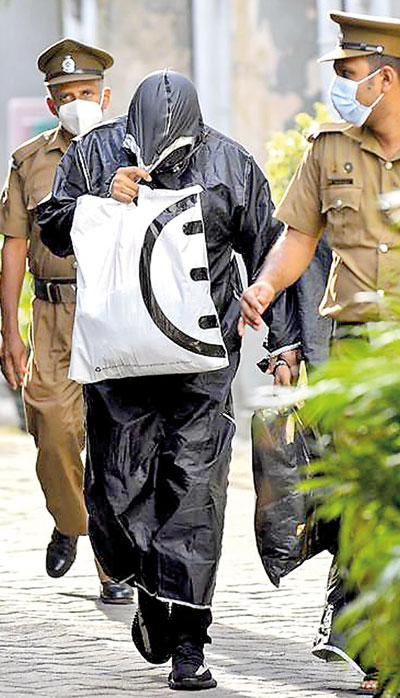News
Law enforcement and policies failing child sex-trafficking victims, child domestics

One of the accused in a recent case of sexual exploitation of a teenage girl that shocked the nation (file pic)
Despite a fall in the number of reported instances of child labour in 2020, gaps in the law, law enforcement, policies, and social programmes hamper Sri Lanka’s efforts to eliminate it.
The Bureau of International Labor Affairs through the United States Department of Labor released its 2020 Findings on the Worst Forms of Child Labor. According to the report last week, Sri Lanka’s has only achieved moderate results.
Sri Lanka raised the minimum age of employment from 14 to 16 years, in line with the compulsory education age. The government also developed a Covid-19 Child vulnerability survey, and implemented regulations of the Hazardous Occupations Regulations Gazette under the Employment of Women, Young Persons and Children Act. The number of labour inspectors were increased from 494 to 588, six of whom were designated for the investigation of child labour.
Authorities also approved a new National Strategic Plan to Monitor and Combat Human Trafficking (2021–2025) and implemented a cash transfer programme for families who lost their income due to the pandemic in a project that also included other social welfare programmes targeting low-income households that were aimed at reducing the economic vulnerabilities of children.
However, gaps in the legal frameworks of Sri Lanka often resulted in victims of sex trafficking and commercial sexual exploitation being penalised for prostitution and other offences instead of being treated as victims. While Sri Lanka has ratified all the key conventions concerning child labour, gaps, especially related to domestic work, continue to leave some working children unaccounted for. While a regulation for the Identification of Hazardous Occupations or Activities Prohibited for Children exists, this list is incomprehensive as domestic work is not included despite mounting evidence that children in this line of work are subject to abuse.
In 2019, the Department of Labour reviewed the regulation under the Employment of Women, Young Persons and Children Act, and drafted new regulations stakeholder participation. The final draft is yet to be fully implemented.
Inadequate disaggregation of data and the absence of adequate authority among on-ground labour officers were another setback. The government does not fully segregate criminal data, including cases investigated for forced child labour, child trafficking, child commercial sexual exploitation, and the use of children in illicit activities and the labour inspectorate is not authorised to assess penalties for labour law violations.
While the Department of Labour did remove five children from situations of hazardous labour in 2020, the labour inspectorate did not have enough staffing to carry out inspections especially in the northern and eastern provinces. Research also found that investigators did not have adequate facilities, or human resources, to investigate. Investigators lack transport, and the police lack facilities to record evidence.
The last Child Activity Survey that was publicly accessible was in 2016 and is likely to have underestimated the number of child workers since its definition of child labour was incompatible with international standards. This was because children ages 5 to 11 years working less than 15 hours per week and children age 12 to 14 years working less than 25 hours per week in agriculture are not counted as child labourers.
The International Labor Organization and NGOs documented several workers who are in debt and in distress at private, smallholding tea estates, which increased the risk of child labour in the tea sector. This often arose from debts that workers owed to the estate for housing and accommodating their families. It was also reported that children under the age of 12 years were used to make up for labour shortages that arose during harvest times.
The Department of Labor noted that children living in coastal and agricultural areas, mining areas, and firewood-producing areas were more vulnerable to child labour.
There are reports of children subjected to child trafficking internally, including from tea estates, for domestic work in Colombo.
These children are often subject to sexual, physical, and psychological abuse as well as non-payment of wages and restrictions on movement.
Internal child trafficking also extends into commercial sex work. Boys are mostly exploited in tourist areas as part of the sex tourism industry. However, thanks to the closing down of international borders from March 2020 to December 2020 a significant reduction in reports of the commercial sexual exploitation of children was noted, the report says.
The report notes that inter-agency coordination had improved between the governmental institutions and several notable social programmes were carried out.

